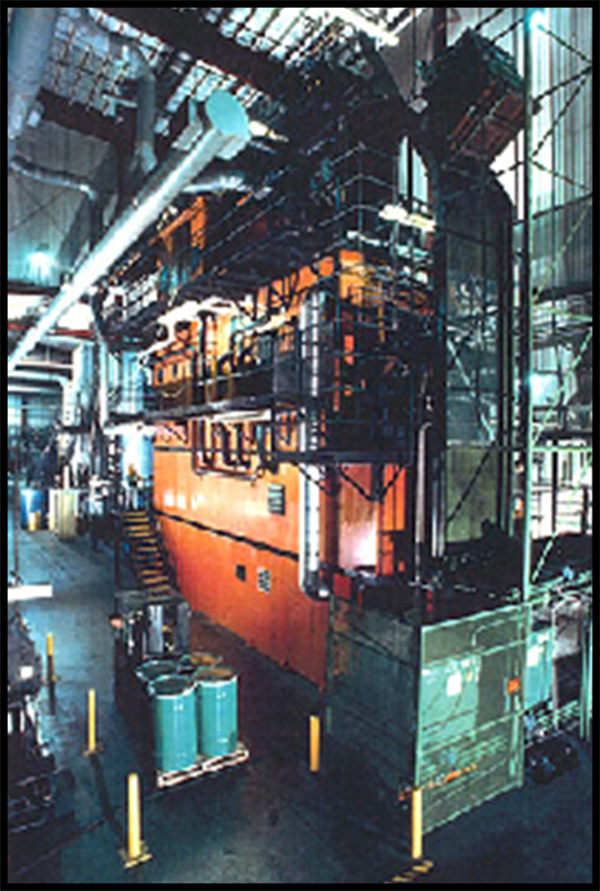News Archive
Rod Reed and Matthew Barnett, Accredited Standards Committee N13, Radiation Protection

Radwaste Incinerator
Photo courtesy of Brian Parsons, Energy Solutions
ANSI/HPS N13.45-2024, Incineration of Low-Level Radioactive Waste, was recently issued. It is available to HPS members on the Members Only side of the Health Physics Society website and to members of the public at the Accuris standards store for $60.
The ANSI/HPS N13.45 standard addresses the following topics on low-level radioactive waste incineration: objectives, a glossary of terms, acronyms, identification of waste sources, selection of incinerator equipment, incinerator siting considerations, administrative and operational controls, monitoring program, disposal of residues, documentation, decontamination and decommissioning, licensing and permitting requirements, a discussion of major agencies that regulate air quality, modeling methods, and a bibliography. The standard also has a flowchart for process flow for the incineration of combustible liquid waste, liquid scintillation cocktail, biological waste, and combustible solid waste.
It is intended to provide minimum requirements for incineration of low-level radioactive waste that is generated at facilities such as medical centers, universities, and research institutions. It describes the identification and characterization of wastes, selection and siting of incineration equipment, licensing and permitting requirements, control and monitoring, disposal of residues, documentation, and decontamination and decommissioning.
This standard is not intended to address nonradiological issues associated with incineration; however, it is not feasible to separate them completely. The low-level radioactive waste that would be a candidate for incineration would have a composition of materials that affect the incineration. To properly operate a combustion device, the other pollutants of interest need to be controlled as well, and it is hoped that many of the radionuclides would be captured in the process. It is also recognized that the incineration process and the flue gas cleaning process are both crucial elements of the incineration process and maintaining compliance.
ANSI/HPS N13.45-2024 updates the 2012 version to reflect current technical and regulatory requirements and guidance. It incorporates contemporary information and is intended to be consistent with current US regulatory requirements or guidance. The process of licensing and permitting an incinerator will require a thorough knowledge of state and local regulations that may be more stringent than this standard. Institutions may wish to refer to this standard when discussing licensing or permitting requirements with regulators.
The following individuals were members of the working group:
- Rodican P. Reed, Health Physics Consultant, WG Chair
- Hans Arlt, US Nuclear Regulatory Commission
- Kara Beharry, AECOM
- Britt Edquist, Idaho Cleanup Project
- Glenn M. Sturchio, Mayo Clinic
- Mark A. Tries, University of Massachusetts Lowell
- Christopher D. Vanderpool, Hopewell Designs, Inc.
Consultant
- Brian Parsons, Energy Solutions




